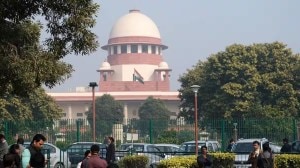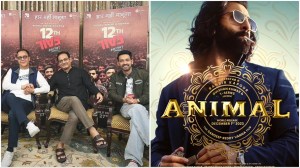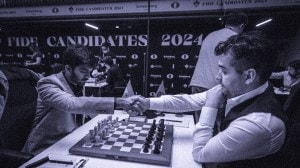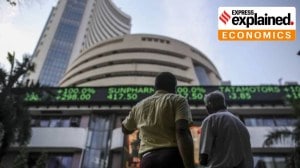- India
- International
Nanavati commission report: ‘Some violent incidents of Feb 28 not communal, outcome of bandh’
The Commission cites instances where people, who were trying to go about their normal lives “inspite of the bandh” (a phrase that repeats in the report a couple of times), were attacked.
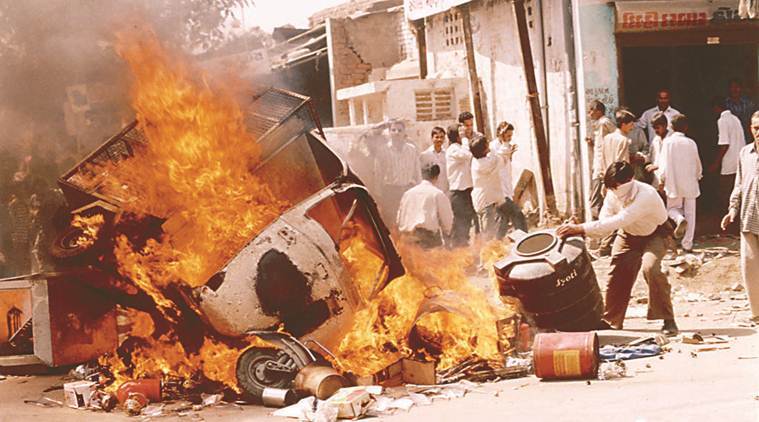 A total of 97 people (including one Hindu) were killed in Naroda Patiya on February 28, 2002, while 44 persons (39 Muslims and 4 Hindus), including former Congress MP Ahsan Jafri, were killed in the Gulberg Society massacre. (File)
A total of 97 people (including one Hindu) were killed in Naroda Patiya on February 28, 2002, while 44 persons (39 Muslims and 4 Hindus), including former Congress MP Ahsan Jafri, were killed in the Gulberg Society massacre. (File)
The final report of the Nanavati Commission tabled in the state assembly Wednesday concluded that some of the incidents of violence on February 28, 2002, were not “communal” in nature, but happened as the outcome of the bandh called by the VHP. The Commission cites instances where people, who were trying to go about their normal lives “inspite of the bandh” (a phrase that repeats in the report a couple of times), were attacked.
The VHP had called for a Gujarat bandh to protest against the killing of kar sevaks on the Sabarmati Express train the previous day, at Godhra. While most of the incidents the Commission samples under this definition are ostensibly of Hindus attacking Hindus and are of the nature of attacks on shops or vehicles, one is of Hindus attacking a Muslim.
In fact, the biggest communal massacres in the state in Naroda Patiya, Naroda Gam where 108 persons were killed and Gulberg society where 69 were killed, happened on February 28, the day of the Gujarat bandh.
The BJP, which was in power in Gujarat, had supported the VHP’s bandh call, a fact which the then DGP K Chakravarthi has claimed before the panel that he got to know only when he attended the late evening meeting presided over by the then chief minister Narendra Modi on February 27. “Till he (Chakravarthi) attended the meeting called by the chief minister at his residence on the night of 27.2.2002, he did not know that BJP had also declared its support to the bandh call given to the VHP,” the Commission states.
The report has concluded that there were some incidents “which were really not incidents of communal violence. They
happened because of the ‘Gujarat bandh’ call for 28.2.2002. Seeing vehicles plying on roads or shops and hotels remaining open despite the ‘bandh’ call, mob attacked them irrespective of the community they belonged to”.

In some cases, properties of Hindus including their vehicles were attacked and damaged or looted by Hindu mobs, it notes, adding that some government vehicles were also damaged and thus such incidents could not be branded as “communal”.
In the case of Gandhinagar district, it notes that of the 10 incidents reported from there, one was of a Hindu mob attacking the truck of a Hindu “as it was seen moving on the highway inspite of the ‘bandh’ call”. However, immediately follows detailing of an incident where on the night of February 28, “a mob of Hindus stopped the truck, set it on fire and threw the Muslim driver and his assistant in the burning truck. A Hindu who had hired that truck and was also travelling in the truck was also thrown into the burning truck”. It notes that the driver died but the assistant and the ‘Hindu hirer’ were able to save themselves by running away.
Especially in the case of Valsad district of south Gujarat which was largely peaceful, the Commission notes that the only two incidents that happened in the district on February 28 were attacks on vehicles and they were because of the bandh call.
In Banaskantha district which was largely peaceful, the only day that reported violence was on February 28. The Commission notes that in this district also buses were attacked when plying on the roads “inspite of the bandh”.
The Commission report states that as per the evidence before it, on February 28 and March 1, district collectors and district superintendents of police issued instructions through fax messages to their subordinate officers to maintain proper bandobast and take preventive action. They were instructed “to deal firmly with persons attempting to disturb peace and order”.
According to the evidence before the Commission, the then chief secretary G Subbarao had issued shoot-at-sight orders on March 1, that is 48 hours after the train burning incident. The Commission, however, concludes: Following those instructions, the officers in charge of police stations did take such steps to the extent it was possible for them to do so under the prevailing circumstances”.
Apr 16: Latest News
- 01
- 02
- 03
- 04
- 05
















